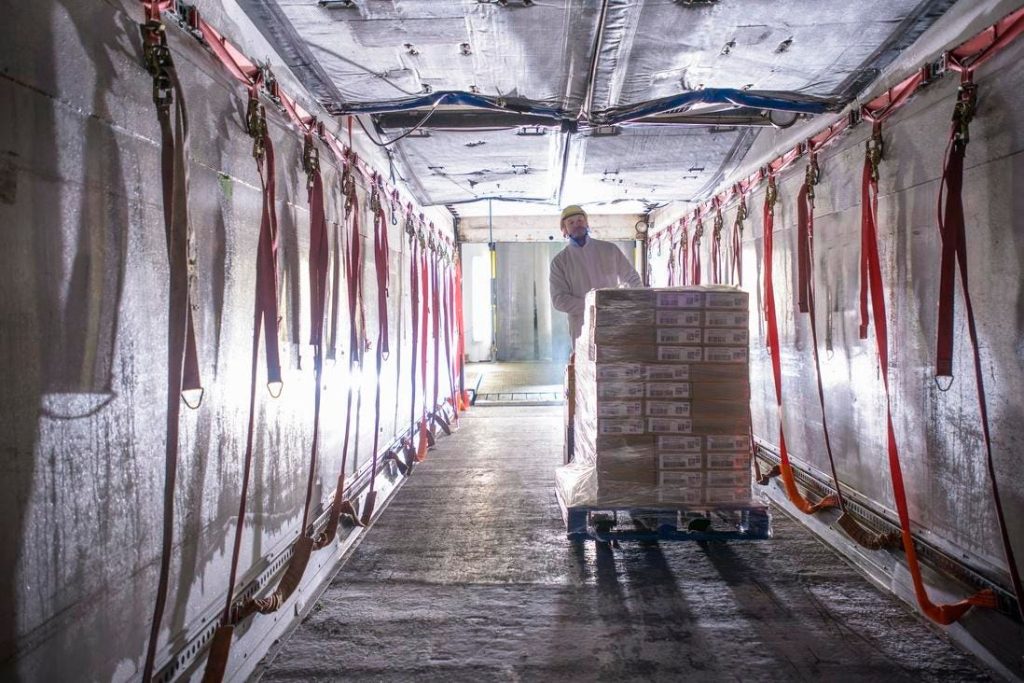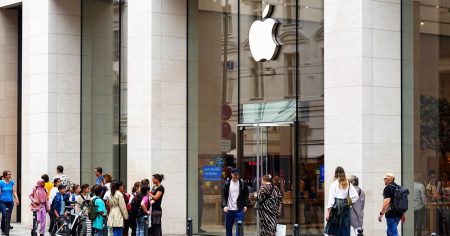Morten Johansen is the COO of DP World Americas.
Scanning the produce section in almost any neighborhood grocery store unveils a cornucopia of produce: Peruvian blueberries, Chilean grapes, bananas from Ecuador—a virtual United Nations of fruit. According to the USDA, more than half of the fresh fruit and a third of fresh vegetables that Americans purchase come from other countries.
Unfortunately, as anyone who’s paid $10 for a pint of raspberries knows, we are all grappling with the volatile and rising cost of perishable food items. From 2021 to 2022, the volume of fresh and frozen fruit imports grew by 3%, while the value of these products rose by 9%.
While food prices can be influenced by a wide range of factors, I believe that improving supply chain efficiency, resilience and sustainability can lessen inflation and price volatility. Innovations in cold chain solutions allow us to enjoy fresh produce year-round, but further innovation could help stabilize prices, expand choice, reduce risks and lessen environmental impacts.
Understanding Cold Chain Logistics
Have you ever thought about how a blueberry gets from a farm in Peru to a supermarket in New York City? How do cold chain logistics successfully deliver fresh agricultural products to markets thousands of miles away and ensure they arrive in good condition?
A blueberry’s journey involves multiple steps and players, including farmers, packers, exporters, shipping companies, customs agents, distributors and retailers. The berries are picked on the farm, then sorted, cleaned and packed before being refrigerated and prepared for export—all while adhering to Peruvian export regulations and U.S. import requirements.
The berries are then placed in refrigerated containers and sent by truck to the port, where they are loaded onto a cargo vessel and shipped to the U.S. Upon arrival, they must clear customs and USDA inspections before being transported to a distribution center, where they are repackaged for delivery to supermarket chains. Finally, the blueberries are placed on the shelf, ready for purchase.
Throughout this journey, maintaining the cold chain is crucial to keep the blueberries fresh and edible. Technologies like real-time tracking and refrigerated shipping containers are used to monitor and control humidity, temperature and other environmental factors.
Addressing Supply Chain Threats And Cost
In 2022, the U.S. imported more than $28 billion worth of fruits—including berries, tomatoes, avocados and bananas—making it the No. 1 global importer. Almost all of these crops are grown in Latin America, with the U.S. importing the bulk of its fresh fruit from Mexico, followed by Chile, Guatemala and Peru—because ultimately, you cannot onshore or nearshore seasonal fruits.
Inflation and rising costs are on many consumers’ minds. Logistics and product pricing are closely related, with transportation reflecting over 26% of the cost of perishables for wholesalers. Unfortunately, transportation costs can be volatile—they are tied to fuel and electricity costs, and when oil prices go up, imports become more expensive.
But with demand for fresh produce continuing to rise, and with new challenges on the horizon, the price of perishables will likely remain vulnerable to market pressures. To remedy this, I recommend that logistics operators work with producers to find new ways to reduce transportation costs and increase efficiency. This includes looking for ways to reduce carbon emissions and finding opportunities to make the supply chain more sustainable, such as investing in alternative power sources and replacing aging diesel equipment with newer, electrified versions.
Infrastructure is another issue. Latin America is beset by aging, lacking or missing infrastructure. The road networks are not necessarily in the best condition. The existing infrastructure should be refurbished and improved to handle the growing perishable exports. Climate change is also a concern; for example, increased hurricane activity is driving companies in the Caribbean and Latin America to harden their operations and increase resilience in the face of increasingly extreme weather events.
To help remedy these issues, consider how you can prepare your supply chain infrastructure to move perishables for the future. The barrier to entry is very high when building a new seaport, ranging from tens of millions to 5 to 6 billion euros and taking at least five years to complete. To overcome this, consider investing in existing ports by expanding and upgrading existing infrastructure and berth capacity. This can include such methods as upgrading power capacity to enable more refrigerated containers (known as “reefers”) to plug in at the same time.
I also recommend considering alternative routes and entry points to get the job done more efficiently. Creating air cargo hubs is one option for boosting export capacity, especially perishables, but the development of these infrastructure assets isn’t always feasible in the short to midterm. Consider Ecuador as an example: Its limited road, rail and air cargo connectivity hampers its ability to export fruit in the most desirable quantities. However, taking a regional approach to solving the challenge could allow for the fruit to be shipped by container ship to a nearby air cargo hub, such as the Dominican Republic, and then transported via air freight, reducing shipping time and virtually eliminating spoilage.
Conclusion
The intricate web of global food supply chains illustrates how rising costs, inefficiencies, climate change and transportation hurdles collide. As demand for perishables continues to grow, the pressure to combat food inflation will likely only intensify.
Cold chain logistics continue to evolve as suppliers and logistics partners implement new approaches and strategies—e.g., hardening operations against extreme weather events, upgrading aging infrastructure and exploring alternative shipping methods—in pursuit of improved efficiency and reduced transportation costs. These efforts have farther-reaching impacts than just keeping blueberries accessible—they also present opportunities to build a more resilient, sustainable future for global food supply.
Forbes Business Council is the foremost growth and networking organization for business owners and leaders. Do I qualify?
Read the full article here










